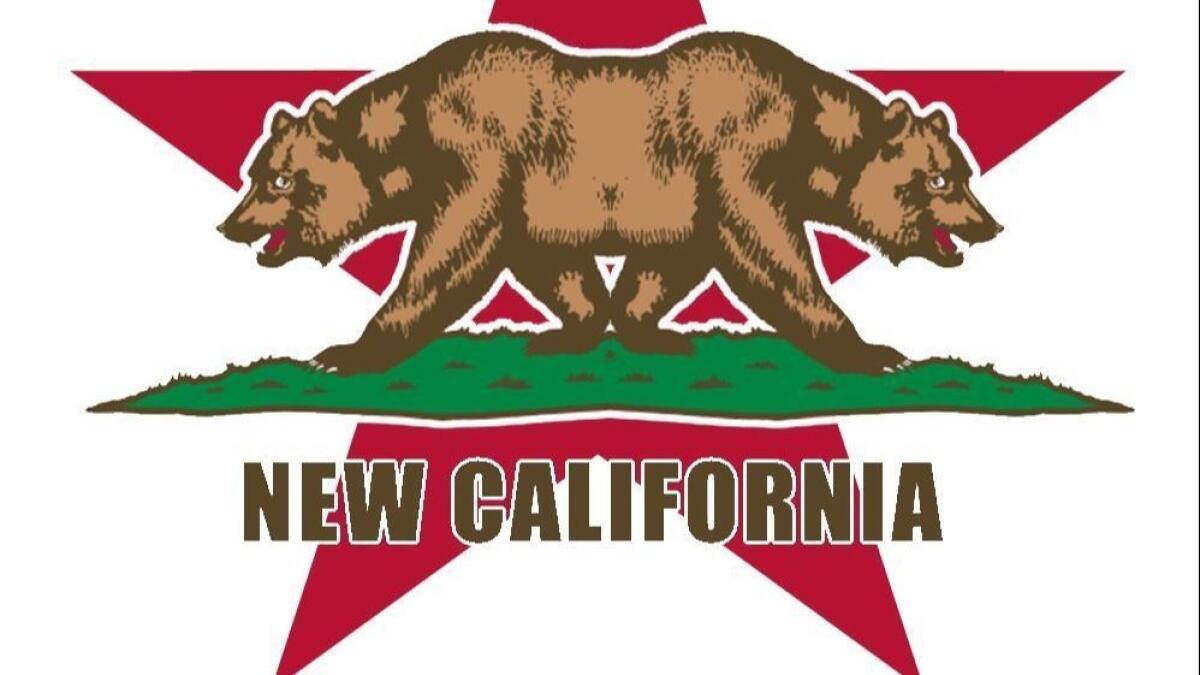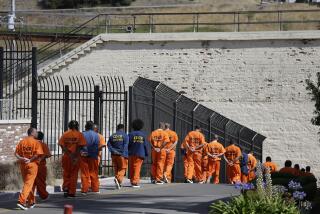Editorial: Breaking up California should be much harder to do

If the “Three Californias” measure qualifies for the ballot later this spring — and there’s no reason to think it won’t — voters will be confronted with an existential question. With one check mark, they could start the process of breaking the 168-year-old Golden State into three pieces: the new states of California, Northern California and Southern California.
Voters might reasonably assume that a decision of such magnitude would come before them only after months, if not years, of study by academics, planning by elected officials and vetting by policy analysts and others well-versed in the mechanics of governance. But voters would be wrong. This far-out plan to break up California is the brainchild of just one man — albeit one worth an estimated $1 billion, which he can spend freely to turn his dreams into our reality.
This is the second time Silicon Valley venture capitalist Tim Draper has tried to qualify a state breakup measure. Inspired by Northern California conservatives who hoped to create a breakaway state called “Jefferson,” Draper came up with his six states plan in 2014. That one failed to gather the 807,615 valid signatures needed to get on the 2016 ballot, which was just as well because it was a terrible idea that the state’s legislative analyst estimated would end up creating both the richest and the poorest states in the U.S. The new scaled-back Three Californias version has better odds of reaching the ballot because the signature requirements have been lowered since then — just 365,880 are needed.
All the state’s common assets would have to be divided up, and there certainly would be unequal distribution and unintended consequences.
Is this what our forefathers envisioned when they crafted California’s direct democracy system? Certainly not. The citizen’s initiative process was conceived as a way for voters to band together to bypass elected officials when those officials were not acting in the peoples’ best interests. The idea was that the electorate should be able to change laws themselves when wealthy special interests (in those days, it was the railroads) gained too much control over the Legislature.
But eventually those wealthy people and special interests discovered that they could use the initiative process too. In recent years, they’ve paid big bucks to hire professional signature-gatherers to obtain the thousands of voter signatures needed, and more big bucks to mount elaborate statewide campaigns.
Over the years, voters often have seen through the worst or silliest or most self-serving measures conceived and financed by one person or interest. But not always.
Cal 3, as the breakup campaign is being called, might sound reasonable and even fun to some voters — like SimCity, only for real. But carving up the most populous state in the union and building new states from scratch is more complicated and perilous than it sounds. Just ask the people who lived through the failed effort to break Los Angeles into three cities in 2002. (For reference, the last state breakup was more than 150 years ago, when West Virginia seceded from Virginia during the Civil War.)
All the state’s common assets would have to be divided up, and there certainly would be unequal distribution and unintended consequences. And so many questions: Would this render all existing state laws null? Would pot still be legal in all these new Californias? How would we divide up prisons and their populations? How would we ensure each new state got the water it needed? Would a college student from Los Angeles get in-state tuition at UC Berkeley? For that matter, what would happen to the University of California system? Would wealth be concentrated in one or two of the states, leaving the other or others much poorer? Who would keep the state flag and motto “Eureka”? Breaking up really is hard to do.
And even if the measure were to pass (which strikes us as highly unlikely), it would be only the first step in a process. Ultimately, Congress would have to agree to allow the three new states to join the union. (And why would a GOP-controlled Congress do so, since it’s not clear the proposal would create a even one reliably red state?)
But let’s imagine for a moment that it did come to pass as envisioned by Draper. There would be a new state of Southern California, which would include Orange and San Diego counties. The sparsely populated counties in the northeastern part of the state would be lumped in with the crowded urban counties in the liberal Bay Area to form the new state of Northern California. And the third new state — called, simply, California — would include six coastal counties from Los Angeles to Monterey. If approved by the federal government, there would now be six U.S. senators from the region instead of just two.
California’s citizen’s initiative process surely isn’t perfect when it allows a single, unelected person to put so important a question before nearly 40 million others simply because he has made a lot of money. But it has been the source of much good as well, including in recent years allowing for criminal justice reform and raising needed tax revenue. And it can continue to do so in the future, provided voters educate themselves so they know what they are doing when they vote “yes.”
Then again, maybe the initiative process will get tossed out altogether during the Great California Breakup.
Follow the Opinion section on Twitter @latimesopinion and Facebook
More to Read
A cure for the common opinion
Get thought-provoking perspectives with our weekly newsletter.
You may occasionally receive promotional content from the Los Angeles Times.






